Join the move towards minimalism! Dwarf vegetables and fruit provide hefty harvests from small pots and small plots or patios! Try these petite plants with oversize appeal—and yield!
So many vegetables are good for container gardening! Dwarf and miniature vegetables are especially suited to pots. All of these colorful, palate-pleasing edibles are container-ready!
(For growing tips, visit the Almanac’s Growing Guides.)
1. Mini Lettuce!
Perfect for containers or as edible edging in flower beds, ‘Pomegranate Crunch’ lettuce is a color sensation. The mini-romaine/butterhead cross produces small, dense heads with cherry leaves and light green hearts dusted with red. Color graduates smoothly from the outer leaves to the heart, creating stunning contrast. You’ll be picking these fast-growing, crunchy heads 45 days after seeds sprout.
Tip: To prevent slugs from damaging lettuce leaves, mulch your soil with shredded cedar bark or sprinkle diatomaceous earth or finely crushed eggshells around the plants.
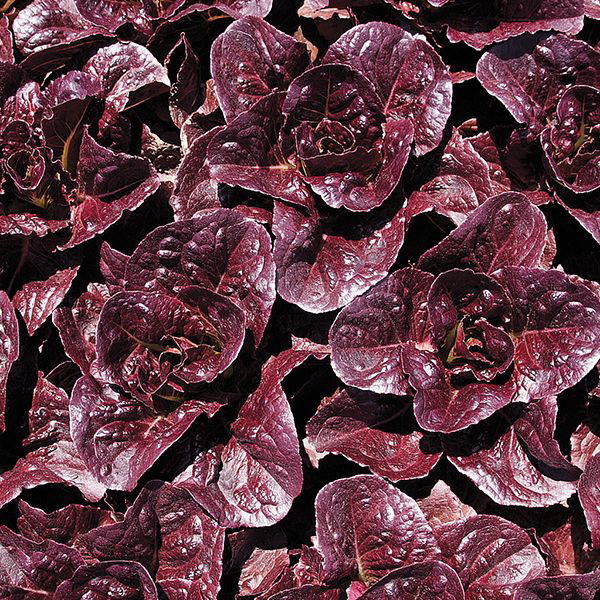 Credit: High Mowing Organic Seeds
Credit: High Mowing Organic Seeds
2. Baby Broccoli
Baby broccoli requires very little space. Got a window box—or a windowsill? Bring either one to life with ‘Aspabroc Baby’ broccoli (the original broccolini). Four plants fit tidily into a 24-inch-long window box or other container. This mild-tasting broccolini (a cross between Chinese kale and broccoli) produces tender, small broccoli heads atop asparagus-thin, tender stems. You’ll be harvesting the center head 50 to 60 days from transplant and snacking on shoots shortly thereafter—and again and again (four or five more times). Oh, and if a flower appears, it’s edible, too.
Tip: Start seeds early, about 3 weeks before planting outdoors. Transplants will tolerate cold days and nights down to 30°F. Broccolini thrives in cool weather.
 Image: Pinetree Garden Seeds
Image: Pinetree Garden Seeds
3. Swizzle Stick Celery!
Celery is not usually on our list, but ‘Peppermint Stick’ (Apium graveolens) is no ordinary celery. It’s eye candy and tasty, too. Bicolor, it’s full of sweet flavor (raw and cooked) and perfect for kitchen gardens and pots.
It was so no-fuss to grow, too. We planted it in a large container and left it alone, except for watering and a little granular, organic fertilizer. ‘Peppermint Stick’ is slow to bolt, and its red color is much darker on the outside stalks. Plants grow to about 20 inches tall and are fully mature 85 to 100 days after the seeds are sown. Start indoors 30 days in advance of the gardening season.
The flavor is surprising sweet and intense—and it even holds up through cooking.
Tip: Keep potted celery in the shade during hot summer months to prevent bolting. Then bring the pot indoors, set it in a sunny window, and use the celery during the autumn and winter for seasoning
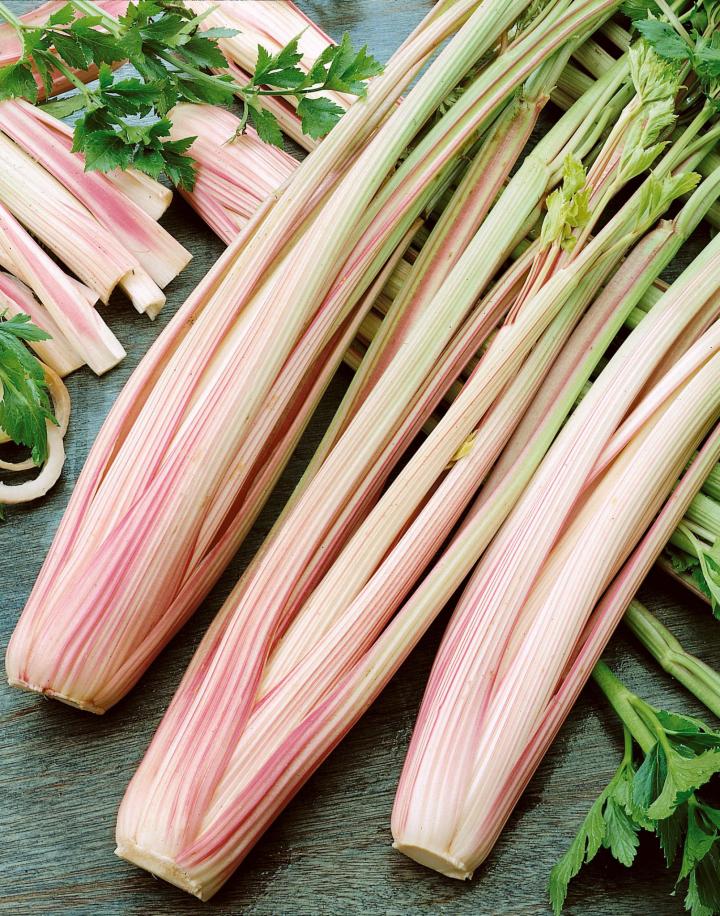 Credit: Seeds by Design
Credit: Seeds by Design
4. Snack-Size Peppers
Brilliant red, orange, and yellow ‘Hungarian Cheese’ peppers are tidy plants. These 28 inch-tall plants produce quickly—about 60 days after being set out as transplants. (Seed packets are an equal mix of the three pepper colors.) Thick-walled, flat, and fluted, these sweet peppers are great for stuffing or eating out of hand. If you have a hefty harvest, don’t worry: They store for 2 weeks or more in the refrigerator. Keep peppers picked for continual production, especially in containers.
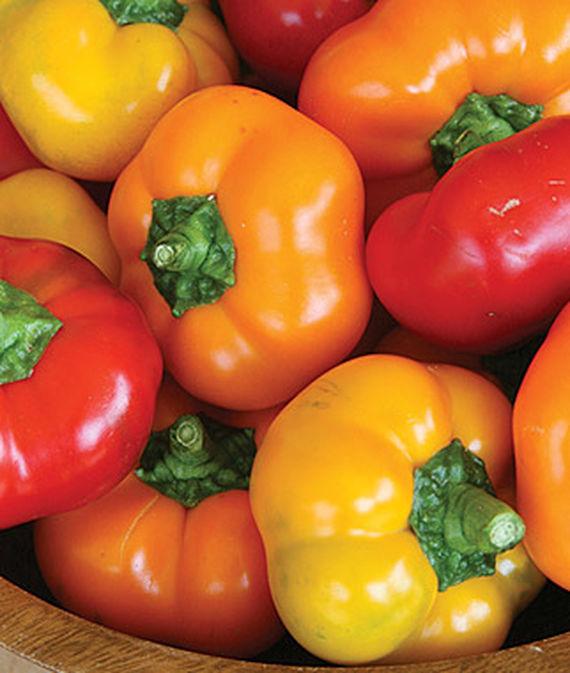 Credit: Burpee
Credit: Burpee
5. Miniature Peas
‘Tom Thumb’ (aka ‘Half Pint’) pea is an old variety from the 1850s that is new again, thanks to the interest in container gardening. A true miniature that grows to only 10 inches tall, it’s a natural for pots. You’ll be picking plenty of full-size pea pods 50 days after sowing. Most peas can withstand a chill; this one can tolerate temperatures down to 20°F. More good news: No staking needed!
Tip: In the spring, soak pea seeds overnight for quick germination in cool soil and inoculate them with rhizobia powder. Peas are legumes, which take nitrogen from the air with the help of a rhizobia bacterium that colonizes on pea roots.
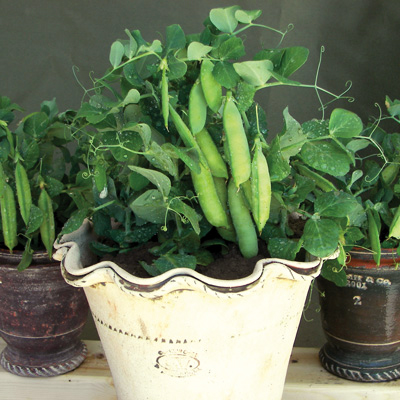 Credit: Tom Thumb Peas, Territorial Seeds
Credit: Tom Thumb Peas, Territorial Seeds
6. Pot Blueberries
‘Blueberry Glaze’ blueberry, a 2-foot-tall compact mound, looks like a boxwood and can be sheared as such afterberries are harvested. Perfect for a container on a patio, the shrub has tiny, deep-green leaves, white-with-pink blossoms in the spring, and small, deep-blue berries in midsummer. Their intense flavor is much like that of wild blueberries. The plant needs only 500 chilling hours and grows well in Zones 5 to 8.
Tip: Keep the soil in blueberry containers acidic; scratch sulfur into the soil every spring when you apply granular fertilizer. When planting, use a potting mix that is predominantly peat.
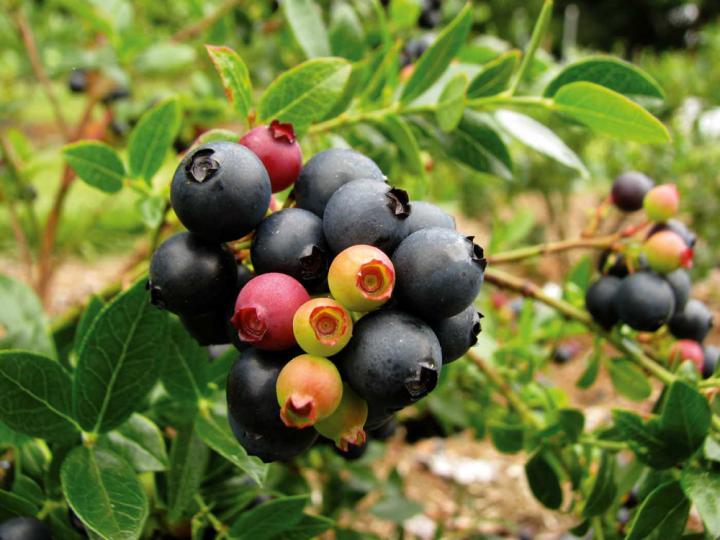 Credit: Blueberry Glaze by Small Creek Farm
Credit: Blueberry Glaze by Small Creek Farm
7. Strawberries Without Runners
‘Pineapple’ alpine strawberries produce tiny, 1-inch-long, yellow berries with the distinct taste and fragrance of pineapples and roses.
The mounding plants are rugged, even from seed, and do not set runners. This is a huge deal because they are easier to maintain! In addition, the plants are putting their energies into producing fruit, not runners.
Alpine strawberries bear during their first season, and plants grow larger every year. We’ve found that ‘Pineapple’ varieties are often the first to germinate with very high germination percentages so it’s vigorous from germination to maturity. Finally, the birds don’t carry away massive numbers of white-yellow fruit like they will red fruit.
Tip: Use them as edible edging for flower beds.
8. No-Prune Berries
‘Sweet Lifeberry’ goji berry is an antioxidant-packed ancient berry from China that thrives in Zones 5 to 9. Purple flowers cover creeping vines in the spring, before brilliant red berries blanket the plants.
Though they sound exotic and are most often found with a high price tag in health food stores, Goji berries are actually easy to grow hardy plants. Goji will do great in a container. Just be sure to choose one large enough (at least 18” in diameter) with drainage hole. For container cultivation, stake three to five strong canes and cut off the remainders.
These berries are exceptionally sweet when ripened on the plant. No pruning is needed, and the plants are disease-resistant. Dubbed the “superfruit” because of the multitude of vitamins, minerals, and amino acids they contain, goji berries can be eaten out of hand, made into smoothies, or dried like raisins.
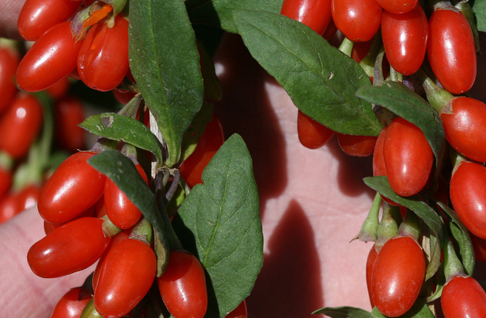 Image: Goji Berries
Image: Goji Berries
Discover baby vegetable gardening!


 Credit: High Mowing Organic Seeds
Credit: High Mowing Organic Seeds Image: Pinetree Garden Seeds
Image: Pinetree Garden Seeds Credit: Seeds by Design
Credit: Seeds by Design Credit: Burpee
Credit: Burpee Credit: Tom Thumb Peas, Territorial Seeds
Credit: Tom Thumb Peas, Territorial Seeds Credit: Blueberry Glaze by Small Creek Farm
Credit: Blueberry Glaze by Small Creek Farm Image: Goji Berries
Image: Goji Berries
